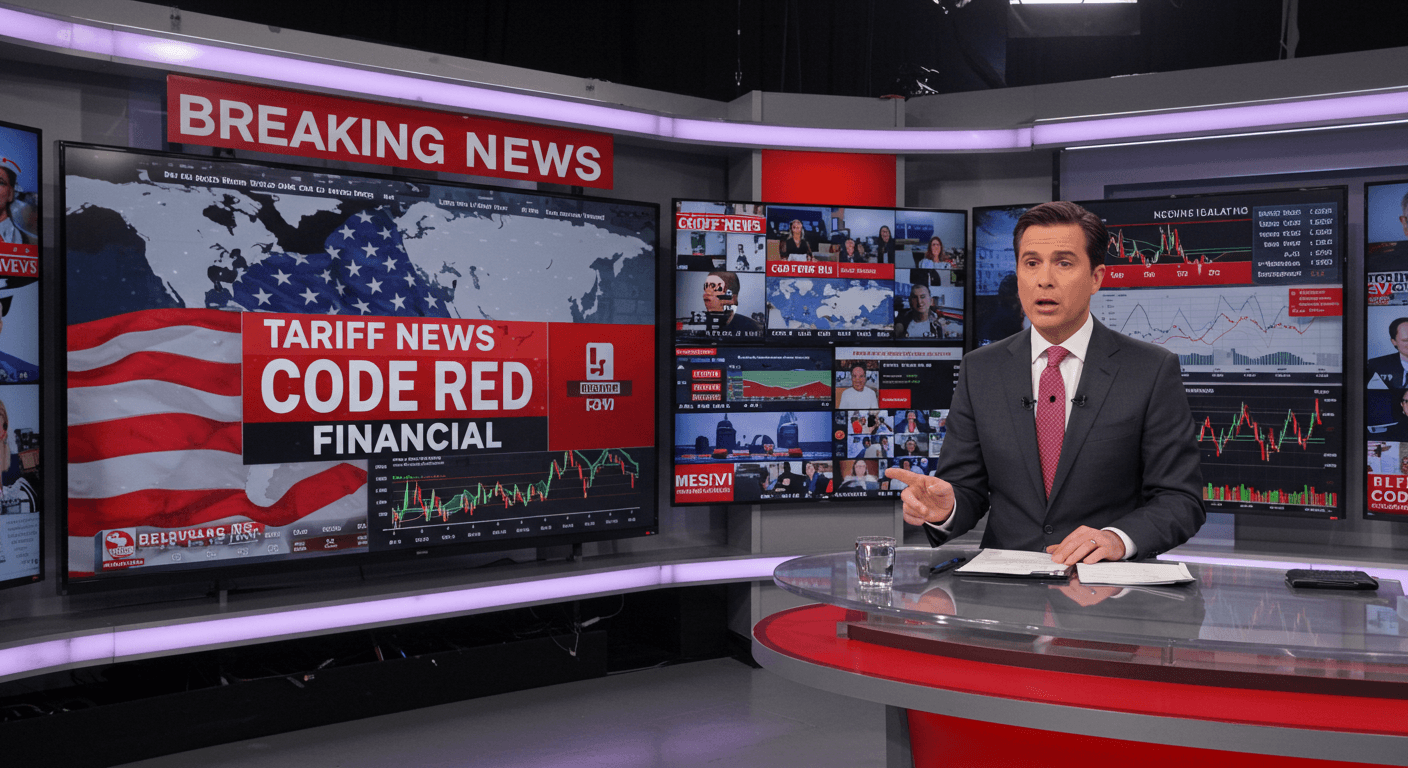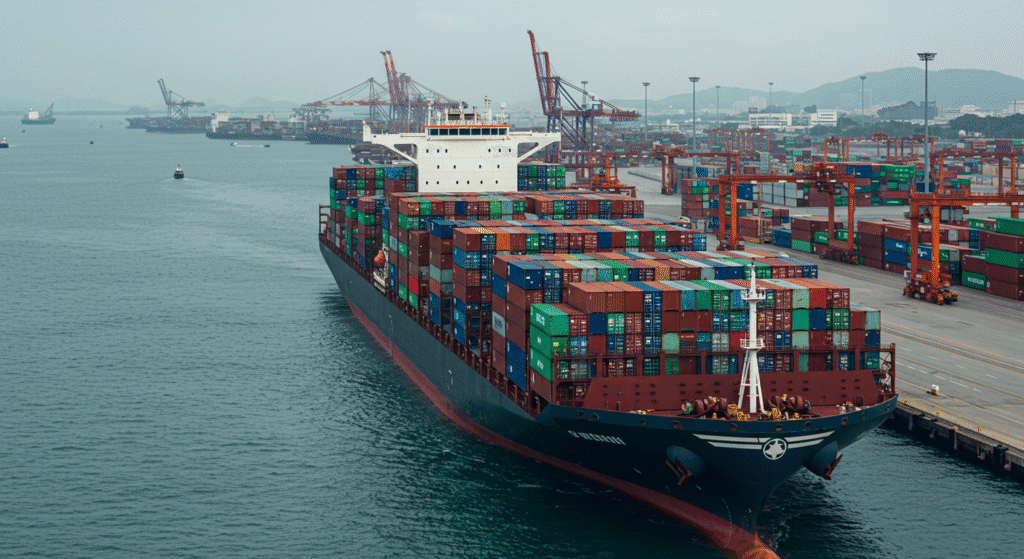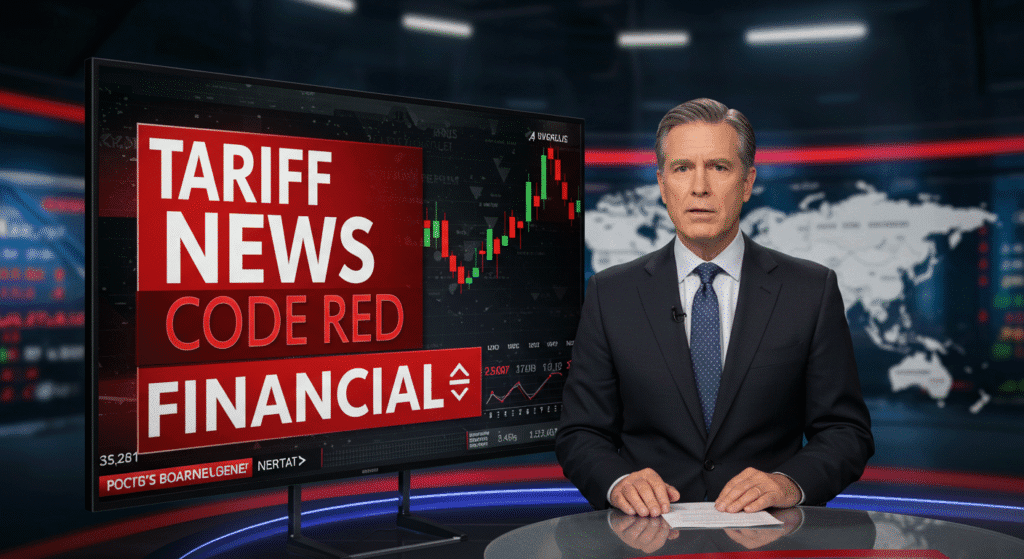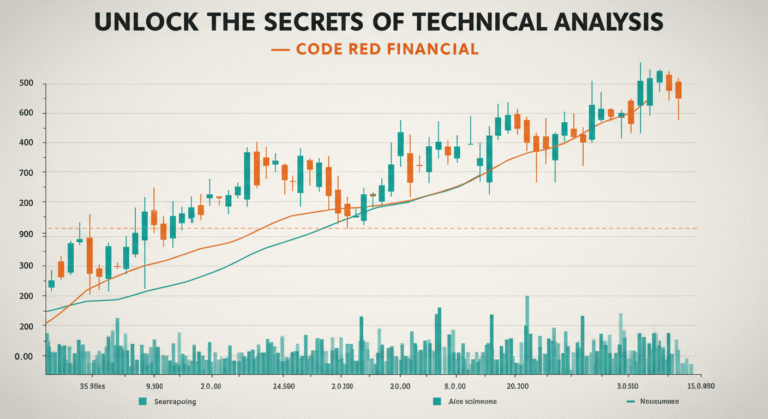
Hello, and welcome. If you’re here, chances are you’re looking for clear, practical insights without getting tangled in the often divisive web of politics. That’s precisely the mission behind this space: to provide well-researched, objective information you can actually use.
We strive to be a calm harbor in the often-stormy sea of information. However, ignoring the significant economic shifts happening around us – particularly the resurgence of tariff policies and the generally chaotic economic environment we’ve witnessed – would be a disservice. These aren’t abstract concepts debated in distant halls of power; they have real, tangible potential to ripple through the global economy and directly impact our financial lives, especially our investments.
As the original thought behind this platform stated, while we aim to avoid the “toxic stew of politics,” it’s irresponsible not to address how these major economic levers might affect you. So, consider this your pre-boarding announcement: buckle in, because the economic landscape suggests a potentially bumpy ride ahead.
Our commitment remains steadfast: practical information. Therefore, this article will dive deep into what this environment means specifically for your investing life. We’ll unpack the potential impacts and explore strategies to help you navigate the turbulence with a clearer head and a steadier hand. (And yes, perhaps a future piece will delve into the broader implications for our everyday cost of living, but for now, let’s focus on safeguarding and potentially growing your hard-earned capital).
Setting the Stage: Understanding the “Chaos” and the Tariff Talk
Before we talk strategy, let’s briefly set the scene. What do we mean by a “chaotic economic environment” and “tariff policies”?
- Economic Uncertainty: This is a broad term encompassing various factors currently at play. Think persistent inflation concerns, fluctuating interest rates set by central banks worldwide, geopolitical tensions disrupting supply chains, shifts in global energy markets, and the lingering effects of recent global events. This uncertainty makes forecasting difficult for businesses and investors alike, leading to market volatility – those sometimes-dramatic swings in stock prices.
- Tariffs: Simply put, tariffs are taxes imposed by a government on imported goods or services. They can be implemented for various reasons – to protect domestic industries, generate revenue, or as a tool in international trade negotiations. Regardless of the intent, the effect is often an increase in the cost of imported goods. This can have cascading consequences:
- Businesses relying on imported materials see their costs rise, potentially squeezing profit margins or forcing them to pass costs onto consumers (inflation).
- Exporters in the targeted country may see demand for their products fall.
- Retaliatory tariffs can be imposed by other countries, escalating trade tensions and disrupting more industries.
- Global supply chains, already fragile, can be further complicated.
It’s crucial to understand that we’re not here to debate the merits or politics of these policies. Our focus is purely on acknowledging their existence and potential economic consequences – consequences that inevitably flow into the investment world.
Why Does This Matter for Your Investment Portfolio?
Okay, so the global economy is complex, and tariffs add another layer. But how does this translate to your retirement account, your brokerage statement, or your investment goals? Here’s the connection:
- Increased Market Volatility: Uncertainty is kryptonite for financial markets in the short term. Tariffs, trade disputes, and unpredictable economic data can cause sharp market reactions. Stocks might swing more wildly day-to-day as investors try to price in the potential impacts on corporate earnings and economic growth. This can be unnerving, even for seasoned investors.
- Sector-Specific Impacts: Tariffs don’t affect all companies equally.
- Companies heavily reliant on imports for their manufacturing process (e.g., electronics, auto parts, certain consumer goods) might see their costs increase significantly, potentially hurting profitability and their stock price.
- Companies that export heavily to countries imposing retaliatory tariffs could face reduced sales and revenue.
- Conversely, domestic companies competing with imports might benefit if tariffs make foreign goods less competitive, provided they don’t rely heavily on imported components themselves.
- Industries like manufacturing, technology, agriculture, and retail are often directly in the line of fire.
- Inflationary Pressures: Tariffs, by increasing the cost of imported goods, can contribute to inflation. If businesses pass these higher costs onto consumers, the general price level rises. Persistent inflation erodes the purchasing power of your money and can negatively impact the real (after-inflation) returns on certain investments, particularly fixed-income assets like bonds offering low yields. Central banks often combat inflation by raising interest rates, which can further dampen economic activity and affect stock and bond valuations.
- Impact on Corporate Earnings: Ultimately, stock prices are heavily influenced by a company’s profitability. Tariffs and economic uncertainty can squeeze profit margins through higher input costs, disrupted supply chains, or reduced consumer demand (if inflation bites too hard). Lower-than-expected earnings or reduced future guidance can lead to stock price declines.
- Currency Fluctuations: Trade policies and economic uncertainty can influence exchange rates. A strengthening or weakening dollar, for instance, impacts multinational corporations (affecting the value of overseas earnings when translated back to dollars) and the returns on international investments held by US investors.
- Investor Sentiment: Beyond the hard numbers, widespread uncertainty and negative headlines can sour investor sentiment, leading to sell-offs even in fundamentally sound companies. Fear can sometimes drive markets more than fundamentals in the short term.
Understanding these connections is the first step toward making informed decisions rather than reactive ones.

Navigating the Bumpy Ride: Practical Investment Strategies
Knowing the potential hazards is one thing; knowing how to steer through them is another. This isn’t about predicting the future (an impossible task) but about building a resilient investment approach that can withstand turbulence. Here are some time-tested strategies to consider:
- Embrace Diversification – Your Portfolio’s Shock Absorber:
- What it is: Spreading your investments across various asset classes (stocks, bonds, real estate, commodities), geographic regions (US, international developed markets, emerging markets), and sectors (technology, healthcare, energy, consumer staples, etc.).
- Why it matters now: If tariffs hit one sector (e.g., manufacturing) or region hard, other parts of your portfolio might hold up better, cushioning the overall impact. Different asset classes also react differently to economic conditions like inflation or rising interest rates. Diversification is the closest thing to a “free lunch” in investing – it helps manage risk without necessarily sacrificing long-term return potential.
- Actionable step: Review your current portfolio allocation. Are you overly concentrated in one area? Consider using low-cost index funds or ETFs to easily diversify across markets and sectors.
- Maintain a Long-Term Perspective:
- What it is: Focusing on your financial goals years or decades down the road, rather than getting caught up in daily or weekly market noise.
- Why it matters now: Volatility driven by headlines and short-term economic data can tempt investors to make emotional decisions, like selling during a downturn (locking in losses) or chasing hot trends. History shows that markets tend to reward investors who stay invested through cycles, benefiting from the eventual recovery and long-term growth trend.
- Actionable step: Write down your long-term financial goals and your investment strategy. Revisit these during turbulent times to remind yourself why you’re invested in the first place. Avoid checking your portfolio obsessively.
- Focus on Quality and Fundamentals:
- What it is: Investing in well-managed companies with strong balance sheets (low debt), consistent earnings, sustainable competitive advantages (a “moat”), and pricing power (the ability to raise prices without losing customers).
- Why it matters now: Companies with strong fundamentals are generally better equipped to weather economic storms. They may be better able to absorb increased costs, navigate supply chain disruptions, or maintain profitability during downturns compared to highly leveraged or less established businesses. Quality companies often prove more resilient over the long haul.
- Actionable step: If you invest in individual stocks, research the financial health and competitive position of the companies you own or consider owning. Look beyond the hype and focus on underlying business strength. For fund investors, look for funds that emphasize quality factors.
- Understand and Respect Your Risk Tolerance:
- What it is: Your ability and willingness to withstand potential investment losses in pursuit of potential gains. This depends on your financial situation, investment timeline, and emotional temperament.
- Why it matters now: A “bumpy ride” feels much bumpier if your portfolio allocation is too aggressive for your comfort level. Knowing your risk tolerance helps you build a portfolio you can stick with, even when markets are volatile, preventing panic decisions.
- Actionable step: Honestly assess how you’d feel if your portfolio dropped significantly in value. Ensure your asset allocation (mix of stocks, bonds, etc.) aligns with this tolerance. Younger investors with longer time horizons can typically afford to take on more risk than those nearing retirement.
- Consider Inflation Hedges (Carefully):
- What it is: Assets that historically have performed relatively well during periods of rising inflation.
- Why it matters now: If tariffs contribute to sustained inflation, certain investments might help protect your purchasing power. Examples can include:
- Treasury Inflation-Protected Securities (TIPS): Bonds whose principal value adjusts with inflation.
- Real Estate: Can offer rising rental income and property values during inflation (though sensitive to interest rates).
- Commodities: Raw materials like oil and metals can sometimes rise with inflation (but are very volatile).
- Certain Stocks: Companies with strong pricing power can pass on increased costs and maintain margins.
- Actionable step: Evaluate if a small, diversified allocation to inflation-hedging assets makes sense within your overall strategy. Don’t over-allocate, as these assets have their own risks.
- Stay Aware of Sector and Geographic Risks:
- What it is: Recognizing that specific policies like tariffs will disproportionately affect certain industries and countries.
- Why it matters now: While broad diversification is key, being aware of potential headwinds allows for tactical adjustments if desired (and if it aligns with your strategy). For example, you might slightly underweight sectors heavily reliant on disrupted supply chains or facing direct tariff impacts if you believe those impacts will be severe and long-lasting. This requires careful research and is often best left to professional managers or done with extreme caution.
- Actionable step: Stay informed about how major economic policies might impact the specific sectors or regions where you are invested. Use this information to inform your diversification strategy, not to make frequent, reactive trades.
- Don’t Discount the Role of Cash (Strategically):
- What it is: Holding a portion of your portfolio in cash or cash equivalents (like money market funds).
- Why it matters now: Cash provides stability (it doesn’t lose value in market downturns, though inflation erodes its purchasing power over time), liquidity (access to funds for emergencies or opportunities), and “dry powder” to potentially buy assets at lower prices during market dips.
- Actionable step: Ensure you have an adequate emergency fund separate from your investments. Within your investment portfolio, determine a strategic cash allocation that balances safety, opportunity, and the drag on returns from inflation.
- Regularly Review and Rebalance:
- What it is: Periodically reviewing your portfolio to ensure it still aligns with your goals and risk tolerance, and selling assets that have grown disproportionately large while buying those that have shrunk, bringing you back to your target allocation.
- Why it matters now: Market volatility can throw your carefully planned asset allocation out of whack. Rebalancing forces you to systematically “sell high and buy low,” maintaining your desired risk level and potentially enhancing long-term returns.
- Actionable step: Set a schedule (e.g., annually or semi-annually) or predetermined thresholds (e.g., when an asset class deviates by more than 5% from its target) for reviewing and rebalancing your portfolio.
- Consider Professional Advice:
- What it is: Working with a qualified, fee-only financial advisor who understands your personal situation, goals, and risk tolerance.
- Why it matters now: Navigating complex economic environments can be challenging. A good advisor can provide objective guidance, help you build and stick to a sound strategy, act as a behavioral coach during volatile times, and tailor advice specifically to you.
- Actionable step: If you feel overwhelmed or unsure, research and interview potential financial advisors. Look for fiduciaries who are obligated to act in your best interest.

The Mental Game: Staying Grounded Amidst the Noise
Beyond the strategic moves, managing your mindset is crucial during turbulent times.
- Avoid Panic Selling: Emotional reactions are often detrimental to long-term returns. Remember your long-term plan.
- Stay Informed, Not Inundated: Keep up with economic news, but avoid constant headline-checking or getting sucked into sensationalism. Focus on reliable, objective sources.
- Focus on What You Can Control: You can’t control tariffs, interest rates, or market fluctuations. You can control your savings rate, your investment strategy, your diversification, your costs, and your reactions. Concentrate your energy there.
Looking Ahead: The Journey Continues
The economic landscape is constantly evolving, and the impacts of policies like tariffs can take time to fully materialize, often in unexpected ways. While we’ve focused here on the investment implications, the potential effects on the cost of everyday goods, job markets, and consumer behavior are also significant – perhaps a topic for another day.
Our goal today was to cut through the noise and offer practical, objective strategies for your investing life, acknowledging the “bumpy ride” potential without succumbing to political point-scoring. Building a resilient portfolio isn’t about having a crystal ball; it’s about thoughtful planning, diversification, discipline, and a long-term perspective.
By understanding the potential impacts and focusing on sound investment principles, you can position yourself not just to weather the storms, but to potentially capitalize on the opportunities that inevitably arise, even in chaotic environments. Stay informed, stay disciplined, and remember why you started investing in the first place.
What are your thoughts on navigating investments in the current climate? Share your strategies or questions in the comments below!
- Disclaimer: This analysis presents a hypothetical scenario for informational and educational purposes only. It does not constitute financial or investment advice. All investment decisions should be made in consultation with a qualified financial professional who can consider your individual financial situation, objectives, and risk tolerance. Illustrative data points, timelines, and potential market reactions are based on interpretations of potential events and economic principles.*




